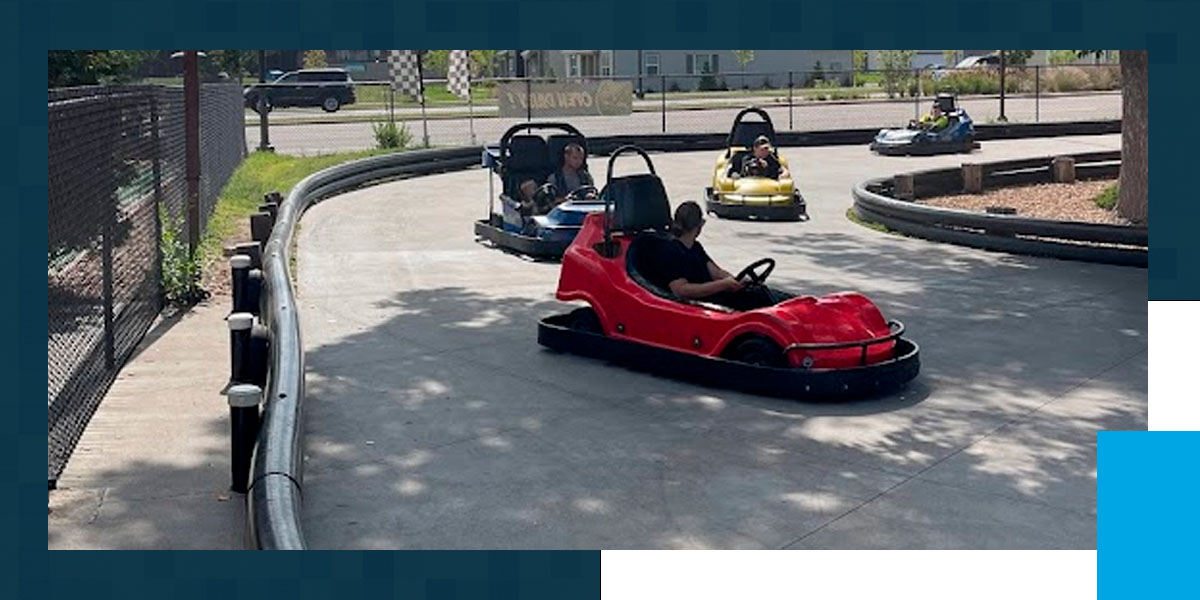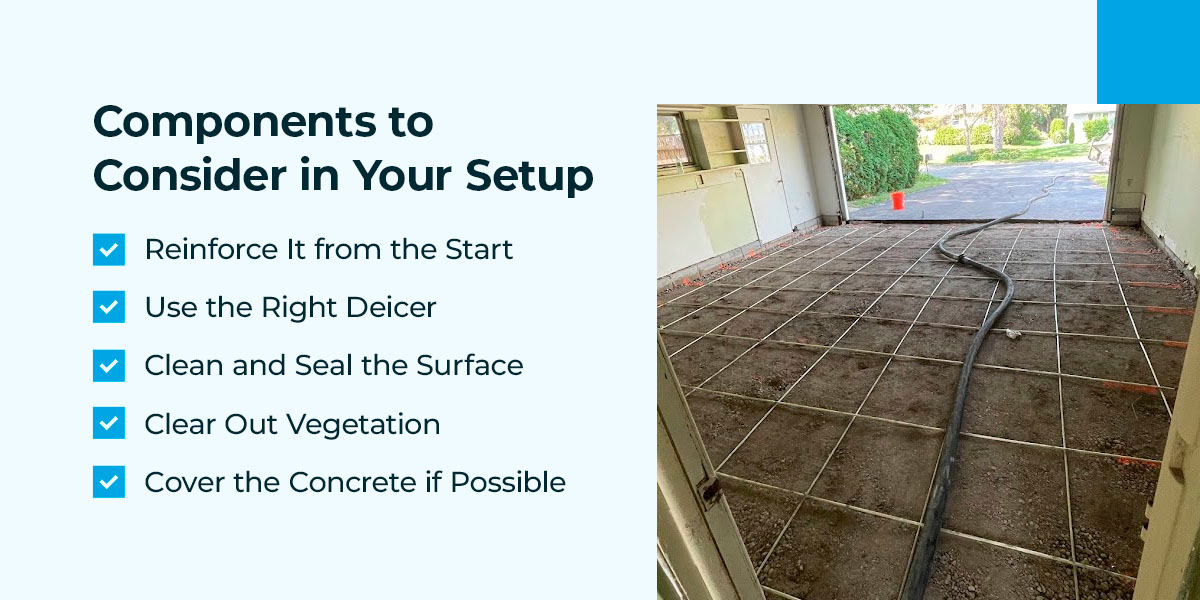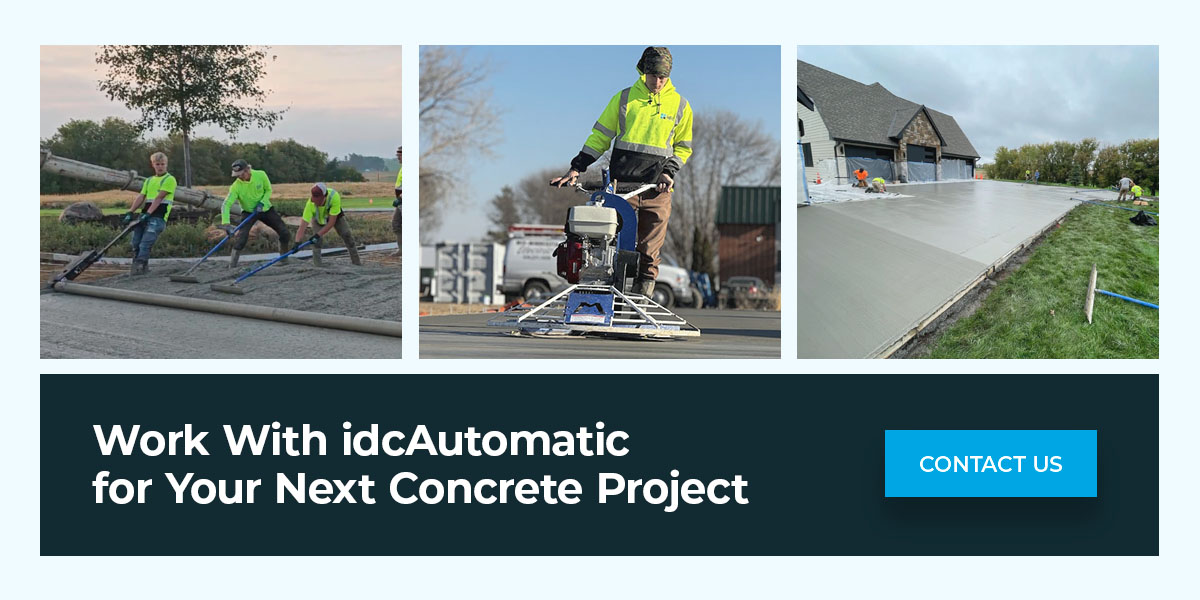How Long Does Concrete Last?
Concrete is one of the most durable building materials available, but like anything exposed to the elements, it doesn’t last forever — especially with the climate in Minneapolis.
Understanding how long concrete can last and what you can do to keep it in good shape for as long as possible is highly beneficial.
What Is the Typical Lifespan of Concrete in Minneapolis?
If the concrete is properly mixed, installed and maintained, it can typically last several decades in Minneapolis.
The weather plays a significant role in concrete longevity. This region experiences a humid continental climate, which means it has four distinct seasons that have considerably different temperatures. Summers are usually warm to hot with a lot of humidity, while winters are severely cold with frequent snow and ice.
The summer sun can cause concrete surfaces to dry and crack. However, it’s the frequent freeze-thaw cycles that occur in late fall, winter and early spring that cause the most damage. Since concrete is porous, water can seep into its pores. When temperatures drop, the water freezes and expands. This puts pressure on the concrete and causes it to crack, spall and deteriorate over time.
The deicing salts used to prevent or remove ice and snow in winter can also seep into the concrete’s pores, and the reactions between the salts and concrete components can weaken the structure over time.
What Influences the Longevity of Concrete?
Several factors beyond weather also affect how well your concrete holds up over time:
Installation Quality
Poor installation is one of the biggest reasons concrete fails early. If it’s done right, the structure will last a long time, but if the installation is done poorly, the concrete will wear out faster and won’t be as durable.
Here’s a quick breakdown of mixing and curing for concrete installation:
- Mixing: The proportions of cement, water and aggregates, such as sand and gravel, must be carefully controlled during mixing as this directly affects the concrete’s strength and durability. A mix with too much water will produce weaker, more porous concrete, which is especially vulnerable to cracking and other surface damage from freeze-thaw cycles in Minneapolis. Ensuring a proper mixing ratio creates a more durable concrete structure capable of withstanding wear and environmental stress over time.
- Curing: For concrete to cure properly, it must be kept moist as it hardens to ensure it achieves maximum strength and durability. You may have noticed contractors covering new structures with wet blankets or continuously sprinkling water on them — this is part of the curing process. If the concrete is left to dry out too quickly, it will shrink and crack, affecting both its durability and appearance.
Traffic and Use
Not all concrete gets treated equally. A light-use patio may last longer than a high-traffic driveway or a commercial loading area. Surfaces exposed to vehicle weight, deicing salts, oils and chemicals are naturally going to wear down faster.
How Can You Tell if Your Concrete Needs Repair or Replacement?
Obvious signs of deterioration in concrete, like cracks or spalling, can show you that it needs repair. However, there are other, more subtle signs that you may not notice unless you know what to look for.
Here are indications you likely need to repair or replace your concrete:
Uneven Appearance
You may need concrete repair or replacement services if concrete floors, walls or driveways seem uneven. This problem usually occurs due to poor installation or soil settling beneath the concrete or water infiltration, weakening the foundation.
Unevenness can increase the likelihood of people tripping over the raised sections. If the issue is in a commercial space, it could disrupt operations or even damage equipment if not addressed as quickly as possible.
Discoloration
Discoloration, staining or efflorescence on concrete structures may not be a structural problem on their own, but they may indicate deeper structural issues that may escalate if not taken care of early.
Learn more about common causes of concrete discoloration below:
- Efflorescence is the white powdery residue you see on concrete surfaces, and it usually appears when moisture brings dissolved salts to the surface. This clearly indicates that there’s too much water in the concrete pores.
- Stains, mold and algae come about when concrete is consistently exposed to moisture, which could be proof of poor drainage or a deteriorating sealant.
Pooling Water or Persistent Dampness
A concrete surface that is consistently moist could indicate a drainage issue or cracks that are allowing water to seep through. Poorly compacted base materials may also cause the surface to retain water, causing persistent damp spots that weaken the concrete over time.
What Can You Do to Extend the Life Expectancy of Your Concrete?
A well-installed concrete surface can last decades with the right care. Here’s how to keep yours in good shape:
Reinforce It from the Start
Using steel rebar or mesh during the pouring process adds internal strength to the concrete, especially in areas that will carry heavy loads or experience frequent traffic. Reinforcement minimizes the risk of cracking and helps the structure remain in good shape when temperature and moisture levels shift with the seasons.
Use the Right Deicer
Avoid traditional rock salt. Use calcium magnesium acetate or other concrete-safe options that minimize surface damage. Always check product labels or consult a contractor.
Clean and Seal the Surface
Concrete needs sealing, especially in a climate like ours. A good sealer protects against water, salts and surface wear. It should be reapplied every few years, depending on how exposed the surface is.
Cleaning helps, too. Regular washing prevents dirt, grime and pollutants from breaking down the surface over time.
Clear Out Vegetation
Weeds and roots can cause significant damage, especially if they start growing through cracks. Keep edges clean and check joints regularly to prevent plants from lifting or breaking up the concrete.
Cover the Concrete if Possible
Add protective covers or shading structures, like awnings, overhangs or pergolas, to shield the concrete from direct exposure to sun, rain, snow and ice. While not practical for every application, protective coverage can make a big difference in extending the life of patios, walkways or decorative concrete surfaces around your property.
Work With idcAutomatic for Your Next Concrete Project
When it comes to concrete, getting the job done right from the start makes all the difference. At idcAutomatic, we’ve brought our same high standards from garage door installation into the concrete space, delivering jobs that are built to last.
Our team knows what it takes to build durable, beautiful concrete surfaces that stand up to the Minnesota weather. We work with the region’s top concrete suppliers to give you a surface that’s as strong as it looks. From driveways and walkways to commercial foundations, we’ve got the tools and experience to do it right, backed by a one-year warranty on both labor and materials.
Ready to get started? Explore our concrete services or contact us today for more information.



